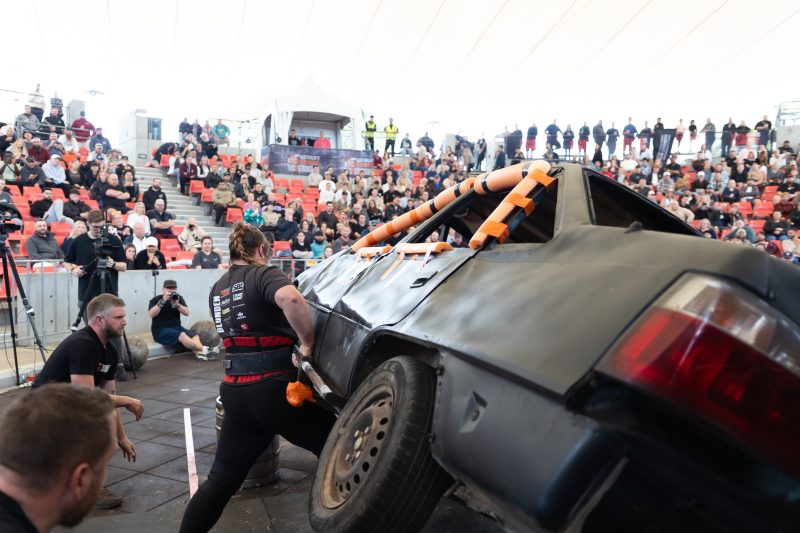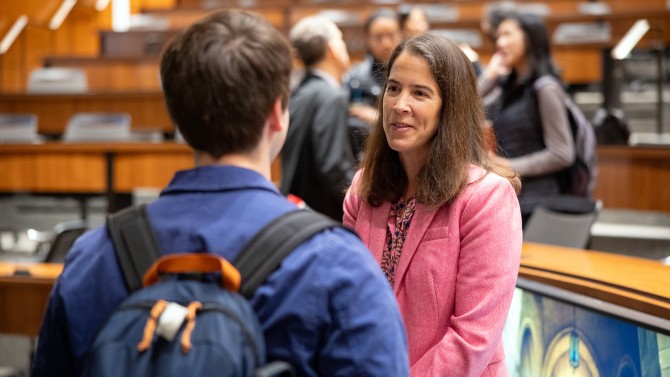Special Adviser to the Australian Government on Low Emissions Technology, Dr Alan Finkel, gave a keynote address at the State of Energy Research Conference.
Transcript
The drums of change are beating.
We have begun a decade of global technology deployment that will define our ability to dramatically reduce greenhouse gas emissions and preserve our planet.
The challenge is to do so without compromising our current and future standards of living.
Some people think it’s easy.
“I’ve got solar panels on my roof and a battery in the backyard”, they say. “Problem solved. What’s wrong with the government?”
In truth, while we can rightly celebrate all the extraordinary progress we have made, we must remind ourselves of the work still ahead.
As huge swathes of humanity emerge from poverty to enter middle class, the demand for energy and goods continues to rise. And so do emissions.
Slowing or reversing the progress of billions of people out of poverty is not acceptable.
Depopulating the cities and encouraging residents to adopt a frugal lifestyle is not practicable.
Population control, cutting the consumption of goods and services, reducing air travel and eliminating red meat from our diets are all unrealistic.
To be clear, there is simply no way that humanity is going to voluntarily give up the extraordinary opportunities that a plentiful energy supply has brought us.
Given this, we have no option but to replace the high emissions technologies we have used for centuries with 21st century clean alternatives.
Technology to solve technology’s problems.
To do so, we will need ongoing science and engineering innovation to build on what we have, increase the pace, reduce the price, and minimise the resource impacts.
Zero emissions technologies will provide the necessities, the sustenance and the indulgences that we unequivocally demand and developing countries deserve.
However, the reality is that most of the zero emissions technologies require us to re-learn how we do things.
And, almost without exception, they start life vastly more expensive than the high emissions incumbents.
Adopting the solutions at scale globally, therefore, will require trillions of dollars in market-driven and government investment.
It will require clear articulation and implementation of sensible, long-term government policies.
It will require sustainable markets that endure well beyond the early government incentives and subsidies.
And it will require developers to earn the respect of local communities so that they embrace wind farms, solar farms, transmission lines, carbon dioxide stored deep underground, large-scale hydroelectric schemes and pumped hydro storage dams.
We simply cannot determine the exact pathway to get to net zero. If we did, you could all retire from research to join engineering and agriculture companies to help them produce and deliver what we already know.
Knowing that there is still much to discover, although I was not involved in the government’s modelling to deliver net zero by 2050, I was pleased to see that the modelling explicitly acknowledged the important role of fundamental and translational research by stating that 15% of what we will require to get to net zero will be from “further technology breakthroughs”.
I was stunned to see this allowance disparaged by some international and domestic critics. What this allowance does is acknowledge the reality that ongoing research, innovation and the expression of human ingenuity over the next 29 years will deliver solutions that we cannot possibly conceive of today, let alone include with precision in a model.
If, as the critics wanted, the modelling had assumed full knowledge today of everything we will need in order to get to net zero, that would be outrageous.
By incorporating the role of new breakthroughs, the modelling implicitly acknowledges the role each of you can play to make progress.
On this, I want to discuss how best to effectively contribute, and provide a few words on goal setting.
To start, on the issue of effective contributions, it is my experience that a positive approach brings more reward than a negative approach. Each of you has to make your own decision about the public stand you will take and your research goals. But let me share an insight.
Currently, there is a widespread assumption that our political leaders poorly understand scientific matters and need to be better informed.
I saw this default assumption of ignorance in spades last year when friends and strangers would write to me about rapid antigen tests for home testing, or oxygen hoods for intensive care beds, or a preprint about modelling, with the request that I inform the Minister or the officials at the Department of Health. As it happened, there was nothing that the senior public servants didn’t know already, and they were routinely briefing the health minister either directly or through his office.
Despite public perceptions, politicians are not ignorant. In fact, it is remarkable how much they know, juggle and take into account. For this reason, lecturing politicians on the need for climate action is ineffectual. Their challenge does not lie in accepting the science, but in finding the balance between emissions reductions and their perceptions of how to best safeguard Australian jobs and economic growth.
The best way to have impact is to offer to help.
A desire to help is what motivated many of Australia’s leading academic researchers last year to create the rapid research information forum.
The strength of the rapid research reports produced by the forum is that they analyse complex issues through a multitude of lenses – scientific, societal and economic. They quickly synthesize them into a report for policy makers, without making recommendations.
The politicians pose the questions and appreciate the insights provided by the academics.
It is also important not to attempt to arbitrarily shut out legitimate ways forward. For example, there was a paper published earlier this year by U.S. researchers that concluded blue hydrogen is not only worse than green hydrogen, but that it would be better to use the methane directly than convert it to hydrogen.
This conclusion was based on a series of worst-case assumptions, including that upstream emissions are worse than the rates used in the national greenhouse inventory and that developers will not take active steps to improve them.
The paper further assumed that the steam methane reforming units in future will continue to burn methane for process heat and pressure rather than assuming that proponents will install new units that will use renewable electricity for process heat and pressure.
And it assumed that the carbon capture process will be only weakly implemented.
To the contrary, my view is that there will be global adoption of a hydrogen guarantee of origin system. Consequently, knowing that buyers will demand to know the by-product emissions during production, future hydrogen producers will be highly motivated to minimise upstream emissions, use zero-emissions steam methane reforming units, and implement carbon capture and storage at high capture rates.
Equally problematic is criticism that is blind to visible progress.
It saddens me when I see learned academies take that kind of position. In my experience, the number one rule if you want to be heard is to start by acknowledging what has been achieved before promoting your idea or expressing your concern.
Compliment politicians from time to time when they do well, after all they are human and will appreciate it. Small steps in the right direction should be celebrated rather than slammed for being inadequate.
I have not undertaken any kind of extensive review, but the only society I have seen embrace this approach is the Institution of Chemical Engineers headquartered in London, representing chemical engineers in more than a hundred countries.
After a brief but powerful statement regarding the climate emergency, their position paper immediately transitions to listing what chemical engineers can do to help.
They acknowledge that chemical engineers are well placed to assist all industrial sectors to “arrest and reverse the damage we humans are doing to the life support systems of our single, shared planet”. For this reason, they are updating their “Code of Conduct to include an obligation on all professional members to act in accordance with the principles of sustainability”.
They commit as a professional society “to take a lead role in tackling climate change, working with all stakeholders, from governments to communities around the world, to deliver a fair, safe and sustainable future”
They will contribute through their members’ jobs, through education and through research.
They offer to provide “advice to governments based on chemical engineering experience and expertise.” That is, specific advice that can show how the skill sets of chemical engineers can make a difference.
***
In the absence of institutional guidance, what can individual scientists do?
I was Chancellor of Monash University, and one of the job requirements was to learn lots of quotes from General Sir John Monash.
One of the most memorable things he wrote was, “Adopt as your fundamental creed that you will equip yourself for life, not solely for your own benefit but for the benefit of the whole community.”
If I challenged you to equip yourself for a life in research, not for your own benefit but for the benefit of the whole-of-community transition to net zero, what would you do?
It may be that in the spirit of community, your research field is community engagement and social license. It is an area that needs focus because the developer community clearly hasn’t succeeded – whether in resources such as natural gas, renewables such as wind and solar farms, or transmission lines required to connect the renewable energy zones to the metropolitan loads.
Or you could work towards providing greater clarity on carbon capture and storage (CCS), which is wrongly framed as an attempt to prolong the use of coal-fired electricity. But that is not the case. The reality is that the economics of CCS for coal fired electricity are so poor that there is no financial or developer appetite to invest in CCS for coal fired electricity generation.
And as you know, there are low cost, clean alternatives for electricity generation.
But there are hard to abate industrial processes for which CCS is absolutely necessary. And if we are to remove carbon dioxide from the atmosphere, it is likely that biosequestration will not be sufficient and we will have to invest in direct air carbon capture and storage.
For these reasons the IPCC, the IEA, the Biden administration, the U.K. government and the Norwegian government, among others, are strong advocates of the need to invest in CCS.
Another difficult to explain area is the role of natural gas in supporting the rapidly growing penetration of solar and wind generation into our national electricity grid.
We will also need research into understanding what forms of control on the use of rooftop solar are acceptable.
Another field for community engagement and social license research, aligned with the Low Emissions Technology Roadmap, might be to anticipate the expectations and interests of consumers in the proposed voluntary zero emissions gas scheme.
This will be a scheme, like the existing GreenPower scheme for electricity, that will provide a way for Australian consumers and businesses to pay for up to 100% methane from waste, or clean hydrogen. Like GreenPower, the molecules will not be delivered directly to the premises, but the proportion of zero emissions gas injected into the distribution system will be increased by an equivalent amount.
Whether the issue is transmission line rights of way, or zero emissions gas schemes, it is not a matter of convincing communities; it is a matter of earning their support. That’s complex, and it is clear over many years that developers and regulators don’t yet have it right.
There is, therefore, an inviting opportunity for social scientists to provide clarity around these issues.
Let me shift to my second topic: goal setting.
The best place to start is to define the problem. This may sound trite, but it is the crucially important first step that is too often skipped by people from all fields.
Aristotle said, “asking the right question is half the answer”.
Identify the biggest problems you think you can contribute to, and then focus on them.
If there are too many to deal with, take a systematic approach. For example, apply some filtering based on impact.
That’s the method we used in the Low Emissions Technology Roadmap. We started with 140 technologies identified in 2019.
By early 2020, we had narrowed the list to about 40, then working as an advisory committee, we narrowed the list to a portfolio of five priority technologies, selected through the four filters of abatement potential, economic benefit, Australia’s comparative advantage and responsiveness to government investment.
If you have not already done so, you might want to ponder what filters you would apply to your own research.
Next, you might give consideration to where in the research and development pipeline you want to play.
In the clean tech area, more so than any other area in the Australian research landscape, we have an optimal development to deployment pipeline anchored on four key pillars: fundamental research at our universities; translational research through the CSIRO and our Cooperative Research Centres; demonstration programs through the Australian Renewable Energy Agency (ARENA); and early commercial deployment through the Clean Energy Finance Corporation.
You obviously have to think about where your research interests lie, and also the extent to which you are prepared to test the limits of your comfort zone by moving fluidly back and forth between two of these pillars rather than being committed forever to just one of them.
Of course, there are other sources of funding. University income applied to research, industry funding, and even philanthropy.
University income applied to energy research can be quite substantial, at least in normal times. Unfortunately, the pandemic has temporarily shattered all the norms.
Industry funding depends greatly on how relevant you can make your research to the real world, and your ability to meet the rapid turnaround needs of industry.
Philanthropic support is less likely, but you never know unless you try.
You could build your filters on the answers to questions such as, “Can I align my research to the priority technologies in the Australian Government’s Low Emissions Technology Roadmap?”
These are:
- low-cost clean hydrogen
- ultra low cost solar electricity
- low-cost electrical energy storage for short durations up to 8 hours and for long durations up to many days
- zero emissions steel, the end-to-end supply chain
- zero emissions aluminium, the end-to-end supply chain
- low-cost storage of captured carbon dioxide
- low-cost soil organic carbon measurement.
Take steelmaking as an example. The buzz is around the use of hydrogen and renewable electricity instead of metallurgical coal to produce direct reduced iron. Huge amounts of research and development will be required to solve the cost and efficiency issues, and to ensure the suitability of our iron ores for these new processes.
Anticipating an even bigger leap into the future, some researchers are thinking further outside the box, looking at renewable electricity in a molten oxide electrolysis smelter to eliminate the need not just for metallurgical coal, but for hydrogen, too.
You could also ask yourself whether you can align your research to the enabling infrastructures prioritised in the Low Emissions Technology Roadmap.
The first is the deployment of battery and hydrogen electric vehicle charging and refuelling stations. The battery charging stations are already in the hands of manufacturers and possibly out of the realm of academic research, but hydrogen refuelling stations are stunningly expensive and require some very different thinking to reduce their cost tenfold and to massively shrink their real estate footprint.
The second priority enabling infrastructure is the digital grid. That is, the extremely powerful software that AEMO, network service providers, developers, equipment makers and others will need in order to optimise a high penetration solar and wind electricity grid.
If this is an area of interest, I expect that you will engage with engineers at AEMO and perhaps at systems operators in international jurisdictions early on to understand their emerging needs, then to the maximum extent practical and palatable, align your research work with their needs.
In Australia, we are in the middle of several years of world leading solar and wind capacity addition per person per year, and we have some of the most challenging technical conditions.
It might be that your research can help preserve system stability in the presence of huge numbers of solar rooftops. It might be that you are an economist and can help preserve sustainable markets as the system shifts from one in which operational expenses dominate to one in which the marginal costs of operation are effectively zero.
One last category in the roadmap for you to contemplate is emerging technologies, headlined by livestock feed supplements to reduce methane emissions, and methods to eliminate carbon dioxide emissions from cement production.
Take meat and livestock. We can use plant-based meat equivalents, or lab grown meat equivalents. But they have high emissions profiles, too.
Or we can directly address the existing problem by eliminating the methane emissions from enteric fermentation in cattle and sheep. Eliminating or vastly reducing methane from enteric fermentation could be achieved by providing feed supplements that interrupt the methanogenic pathway, by breeding cattle and sheep that do not have methanogenic bacteria, or by developing vaccines to eliminate the methanogenic bacteria.
One of the emerging technologies that is still a twinkle in our eye but a huge potential opportunity for Australia, and the world, is direct air carbon capture and storage, sometimes referred to by the acronym DACCS.
I am sure you are familiar with it, but DACCS basically consists of using fans to bring huge volumes of air containing one carbon dioxide molecule per 2,500 air molecules to a membrane of some kind that captures the carbon dioxide, which is then permanently sequestered.
DACCS is a form of negative emissions that will be key once everything else has been done to reduce emissions. The only problem is that DACCS is much too expensive today, therefore lots of research and development will be required to cut the price by a factor of 10 or more.
A broader question, yet crucially important as we look for alternatives to our coal and natural gas exports, is how do we find better ways to add value to our critical metals and minerals exports?
For decades, the puzzle has been why we don’t process more of our resources to higher value intermediaries before exporting them. It’s not just an investment decision, it is a science and engineering question to address costs and efficiency.
This year, one of my tasks has been to help broker clean tech bilateral partnerships between Australia and a number of other countries, including the U.K, Japan, Germany, Singapore and Korea. These partnerships will fund demonstration scale projects in areas aligned with the roadmap. The implementation phase will begin next year, so please keep an eye open for announcements.
My main point in all of these suggestions is for researchers to start by identifying the problem to be solved. Too often researchers commence a discussion with me by describing the new research network they are going to implement, or the new collaboration they are going to pursue. Structure is secondary; problem identification is primary.
Your goal in life, every day, should be to shift the dial. Yes, you need collaborations and grants, but the starting point should always be to define the problem. And then help to solve it.
I have no doubt you are up to the challenge and that this room is filled with the minds who will carry this endeavour forward and will expand it into a whole new realm of as yet unimagined possibilities and practical applications.
Through this conference, we can dream and plan together.
The drums of change are beating; my hope is that we will all be members of the band rather than members of the audience.
May the Force be with you.
Thank you.







